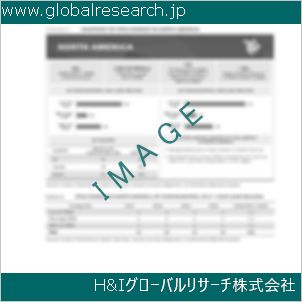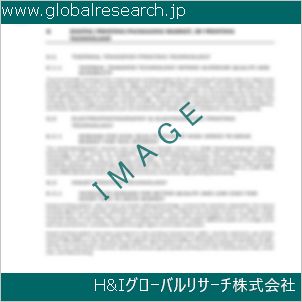Table of Contents
1 Industry Overview of Leadborate
1.1 Definition and Specifications of Leadborate
1.1.1 Definition of Leadborate
1.1.2 Specifications of Leadborate
1.2 Classification of Leadborate
1.3 Applications of Leadborate
1.3.1 Nuclear Application
1.3.2 Non-Nuclear Application
1.4 Industry Chain Structure of Leadborate
1.5 Industry Overview and Major Regions Status of Leadborate
1.5.1 Industry Overview of Leadborate
1.5.2 Global Major Regions Status of Leadborate
1.6 Industry Policy Analysis of Leadborate
1.7 Industry News Analysis of Leadborate
2 Manufacturing Cost Structure Analysis of Leadborate
2.1 Raw Material Suppliers and Price Analysis of Leadborate
2.2 Equipment Suppliers and Price Analysis of Leadborate
2.3 Labor Cost Analysis of Leadborate
2.4 Other Costs Analysis of Leadborate
2.5 Manufacturing Cost Structure Analysis of Leadborate
2.6 Manufacturing Process Analysis of Leadborate
3 Technical Data and Manufacturing Plants Analysis of Leadborate
3.1 Capacity and Commercial Production Date of Global Leadborate Major Manufacturers in 2023
3.2 Manufacturing Plants Distribution of Global Leadborate Major Manufacturers in 2023
3.3 R&D Status and Technology Source of Global Leadborate Major Manufacturers in 2023
3.4 Raw Materials Sources Analysis of Global Leadborate Major Manufacturers in 2023
4 Capacity, Production and Revenue Analysis of Leadborate by Regions, Types and Manufacturers
4.1 Global Capacity, Production and Revenue of Leadborate by Regions 2019-2024
4.2 Global and Major Regions Capacity, Production, Revenue and Growth Rate of Leadborate 2019-2024
4.3 Global Capacity, Production and Revenue of Leadborate by Types 2019-2024
4.4 Global Capacity, Production and Revenue of Leadborate by Manufacturers 2019-2024
5 Price, Cost, Gross and Gross Margin Analysis of Leadborate by Regions, Types and Manufacturers
5.1 Price, Cost, Gross and Gross Margin Analysis of Leadborate by Regions 2019-2024
5.2 Price, Cost, Gross and Gross Margin Analysis of Leadborate by Types 2019-2024
5.3 Price, Cost, Gross and Gross Margin Analysis of Leadborate by Manufacturers 2019-2024
6 Consumption Volume, Consumption Value and Sale Price Analysis of Leadborate by Regions, Types and Applications
6.1 Global Consumption Volume and Consumption Value of Leadborate by Regions 2019-2024
6.2 Global and Major Regions Consumption Volume, Consumption Value and Growth Rate of Leadborate 2019-2024
6.3 Global Consumption Volume and Consumption Value of Leadborate by Types 2019-2024
6.4 Global Consumption Volume and Consumption Value of Leadborate by Applications 2019-2024
6.5 Sale Price of Leadborate by Regions 2019-2024
6.6 Sale Price of Leadborate by Types 2019-2024
6.7 Sale Price of Leadborate by Applications 2019-2024
6.8 Market Share Analysis of Leadborate by Different Sale Price Levels
7 Supply, Import, Export and Consumption Analysis of Leadborate
7.1 Supply, Consumption and Gap of Leadborate 2019-2024
7.2 Global Capacity, Production, Price, Cost, Revenue, Supply, Import, Export and Consumption of Leadborate 2019-2024
7.3 USA Capacity, Production, Price, Cost, Revenue, Supply, Import, Export and Consumption of Leadborate 2019-2024
7.4 EU Capacity, Production, Price, Cost, Revenue, Supply, Import, Export and Consumption of Leadborate 2019-2024
7.5 China Capacity, Production, Price, Cost, Revenue, Supply, Import, Export and Consumption of Leadborate 2019-2024
7.6 Japan Capacity, Production, Price, Cost, Revenue, Supply, Import, Export and Consumption of Leadborate 2019-2024
8 Major Manufacturers Analysis of Leadborate
8.1 Manufacturer One
8.1.1 Company Profile
8.1.2 Product Picture and Specifications
8.1.2.1 Type I
8.1.2.2 Type II
8.1.2.3 Type III
8.1.3 Capacity, Production, Price, Cost, Gross and Revenue
8.1.4 Contact Information
8.2 Manufacturer Two
8.2.1 Company Profile
8.2.2 Product Picture and Specifications
8.2.2.1 Type I
8.2.2.2 Type II
8.2.2.3 Type III
8.2.3 Capacity, Production, Price, Cost, Gross and Revenue
8.2.4 Contact Information
8.3 Manufacturer Three
8.3.1 Company Profile
8.3.2 Product Picture and Specifications
8.3.2.1 Type I
8.3.2.2 Type II
8.3.2.3 Type III
8.3.3 Capacity, Production, Price, Cost, Gross and Revenue
8.3.4 Contact Information
8.4 Manufacturer Four
8.4.1 Company Profile
8.4.2 Product Picture and Specifications
8.4.2.1 Type I
8.4.2.2 Type II
8.4.2.3 Type III
8.4.3 Capacity, Production, Price, Cost, Gross and Revenue
8.4.4 Contact Information
8.5 Manufacturer Five
8.5.1 Company Profile
8.5.2 Product Picture and Specifications
8.5.2.1 Type I
8.5.2.2 Type II
8.5.2.3 Type III
8.5.3 Capacity, Production, Price, Cost, Gross and Revenue
8.5.4 Contact Information
…
9 Marketing Trader or Distributor Analysis of Leadborate
9.1 Marketing Channels Status of Leadborate
9.2 Traders or Distributors with Contact Information of Leadborate by Regions
9.3 Ex-work Price, Channel Price and End Buyer Price Analysis of Leadborate
9.4 Regional Import, Export and Trade Analysis of Leadborate
10 Industry Chain Analysis of Leadborate
10.1 Upstream Major Raw Materials Suppliers Analysis of Leadborate
10.1.1 Major Raw Materials Suppliers with Contact Information Analysis of Leadborate
10.1.2 Major Raw Materials Suppliers with Supply Volume Analysis of Leadborate by Regions
10.2 Upstream Major Equipment Suppliers Analysis of Leadborate
10.2.1 Major Equipment Suppliers with Contact Information Analysis of Leadborate
10.2.2 Major Equipment Suppliers with Product Pictures Analysis of Leadborate by Regions
10.3 Downstream Major Consumers Analysis of Leadborate
10.3.1 Major Consumers with Contact Information Analysis of Leadborate
10.3.2 Major Consumers with Consumption Volume Analysis of Leadborate by Regions
10.4 Supply Chain Relationship Analysis of Leadborate
11 Development Trend of Analysis of Leadborate
11.1 Capacity, Production and Revenue Forecast of Leadborate by Regions and Types
11.1.1 Global Capacity, Production and Revenue of Leadborate by Regions 2024-2029
11.1.2 Global and Major Regions Capacity, Production, Revenue and Growth Rate of Leadborate 2024-2029
11.1.3 Global Capacity, Production and Revenue of Leadborate by Types 2024-2029
11.2 Consumption Volume and Consumption Value Forecast of Leadborate by Regions, Types and Applications
11.2.1 Global Consumption Volume and Consumption Value of Leadborate by Regions 2024-2029
11.2.2 Global and Major Regions Consumption Volume, Consumption Value and Growth Rate of Leadborate 2024-2029
11.2.3 Global Consumption Volume and Consumption Value of Leadborate by Types 2024-2029
11.2.4 Global Consumption Volume and Consumption Value of Leadborate by Applications 2024-2029
11.3 Supply, Import, Export and Consumption Forecast of Leadborate
11.3.1 Supply, Consumption and Gap of Leadborate 2024-2029
11.3.2 Global Capacity, Production, Price, Cost, Revenue, Supply, Import, Export and Consumption of Leadborate 2024-2029
11.3.3 USA Capacity, Production, Price, Cost, Revenue, Supply, Import, Export and Consumption of Leadborate 2024-2029
11.3.4 EU Capacity, Production, Price, Cost, Revenue, Supply, Import, Export and Consumption of Leadborate 2024-2029
11.3.5 China Capacity, Production, Price, Cost, Revenue, Supply, Import, Export and Consumption of Leadborate 2024-2029
11.3.6 Japan Capacity, Production, Price, Cost, Revenue, Supply, Import, Export and Consumption of Leadborate 2024-2029
12 New Project Investment Feasibility Analysis of Leadborate
12.1 New Project SWOT Analysis of Leadborate
12.2 New Project Investment Feasibility Analysis of Leadborate
13 Conclusion of the Global Leadborate (CAS 10214-39-8) Industry 2024 Market Research Report
| ※参考情報 ホウ酸鉛(Lead borate)は、化学式で表される無機化合物であり、特に工業用途において重要な役割を果たしています。CAS番号10214-39-8で知られるこの化合物は、鉛とホウ酸の塩であり、特にガラスやセラミックスの製造に利用されることが多いです。以下では、ホウ酸鉛の定義、特徴、種類、用途、関連技術について詳しく説明いたします。 ホウ酸鉛は、鉛エレメントとホウ素酸の結合によって形成された化合物です。この物質は、無色透明から白色の結晶または粉末状で存在し、非常に安定な性質を持っています。ホウ酸や鉛の塩にはさまざまなバリエーションがあり、これにより多様な特性を持つホウ酸鉛が生成されます。 ホウ酸鉛の特徴の一つは、その優れた熱安定性と化学的安定性です。これにより、高温条件下でも分解しにくく、多くの化学薬品にも耐性があります。また、優れた絶縁性を持つため、電子機器や電気産業においても利用されることがあります。加えて、ホウ酸鉛は他の材料と組み合わせることで、その特性をさらに強化することができます。 原料としてのホウ酸鉛は、さまざまな種類がありますが、一般的には含まれる鉛の種類やホウ素分の含有量によって異なります。これにより、物質ごとに特定の用途に最適化されています。鉛を含むため、取り扱いには注意が必要であり、適切な安全対策が求められます。 ホウ酸鉛の用途は多岐にわたり、その特性によってさまざまな分野で利用されています。特にガラス製造においては、ホウ酸鉛が添加されることで、透明性が高まり、光学特性が向上します。このため、光学ガラスや高品質なクリスタル製品の製造に重要な役割を果たしています。また、ホウ酸鉛は電子機器やセラミックコンデンサーにおいても使用されており、絶縁材料としての特性を活かしています。 さらに、ホウ酸鉛は農業の分野でも関連している場合があります。鉛を含む成分は、過剰に使用されることによって植物に対して毒性を示すことがあるため、環境への影響を考慮しなければならない点もあります。生態系への負荷を軽減するためには、それに代わるより安全な材料の選定が求められる状況です。 関連技術としては、ホウ酸鉛を含む複合材料の開発や、他の材料との組み合わせによる新しい機能の創出が挙げられます。また、ナノテクノロジーの進展によって、ホウ酸鉛の特性をさらに高度化する技術が進められています。これにより、従来の用途に加え、新たな領域での応用も期待されているのです。 一方で、ホウ酸鉛には毒性があるため、その使用については厳格な規制が設けられています。鉛中毒や環境汚染を防ぐためには、適切な取り扱いや廃棄処理が不可欠です。したがって、ホウ酸鉛の利用に際しては、リスク管理を十分に行いながら、持続可能な方法での利用が求められています。 このように、ホウ酸鉛はその特性から多くの産業において重要な役割を果たしていますが、その取り扱いや関連技術の進展には、環境や健康への影響を十分に考慮する必要があります。今後も、ホウ酸鉛の特性を活かした安全かつ効果的な利用法の開発が期待されます。以上のように、ホウ酸鉛については、技術的な知見と倫理的な配慮の両方が重要であり、今後の発展が注目される分野であると言えるでしょう。 |
❖ 免責事項 ❖
http://www.globalresearch.jp/disclaimer












